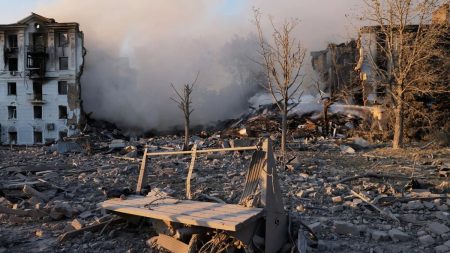Storm Darragh, a powerful weather system characterized by violent winds and torrential rain, wreaked havoc across Ireland and the UK in late 2023, leaving a trail of disruption and power outages in its wake. The storm, which packed wind gusts reaching a staggering 150 kilometers per hour, prompted authorities to issue urgent warnings, urging millions to take shelter and brace for the onslaught of extreme weather. The widespread impact of the storm highlighted the vulnerability of infrastructure to powerful natural forces and the critical role of early warning systems in mitigating potential harm.
The storm’s intensity led to the issuance of a rare red weather warning, the highest level of alert, by the UK Met Office, signifying a significant threat to life and property. This unprecedented step underscored the severity of the impending storm and emphasized the need for immediate precautionary measures. The alert, accompanied by a distinctive siren-like sound, was disseminated to approximately three million households across Wales and southwest England, urging residents to remain indoors and avoid venturing out into the hazardous conditions. This widespread dissemination of the warning aimed to maximize awareness and ensure public safety in the face of the imminent danger.
The impact of Storm Darragh was swift and widespread. Across Ireland and the UK, hundreds of thousands of homes and businesses were plunged into darkness as the storm’s ferocious winds toppled power lines and disrupted electricity supply. The power outages, affecting nearly 400,000 premises in Ireland alone, disrupted daily life, leaving communities without essential services and highlighting the dependence on reliable power infrastructure. The disruption extended to transportation networks as well, with major highways and bridges forced to close due to the dangerous wind conditions, while numerous train services were suspended, further hampering travel and connectivity.
The storm’s ferocity also wreaked havoc on air travel. At Dublin Airport, several flights were canceled as the high winds made safe operations impossible. This disruption to air travel further compounded the challenges faced by those seeking to travel during the storm, adding to the overall sense of disruption and uncertainty caused by the extreme weather event. The widespread cancellations underscored the vulnerability of air travel to severe weather conditions and the prioritization of safety in such situations.
The aftermath of Storm Darragh revealed the significant impact of the storm on both infrastructure and daily life. The extensive power outages, transportation disruptions, and flight cancellations highlighted the disruptive power of extreme weather events and the need for robust infrastructure capable of withstanding such conditions. The storm also served as a stark reminder of the importance of preparedness and the critical role of effective early warning systems in minimizing the impact of such events.
Beyond the immediate disruption, Storm Darragh raised important questions about the increasing frequency and intensity of extreme weather events and the need for greater resilience in the face of a changing climate. The storm served as a potent reminder of the potential consequences of climate change and the urgent need for collective action to mitigate its effects and adapt to a future characterized by more frequent and intense weather extremes. The experience of Storm Darragh underscored the importance of investing in resilient infrastructure, enhancing early warning systems, and promoting public awareness to minimize the impact of future extreme weather events.














